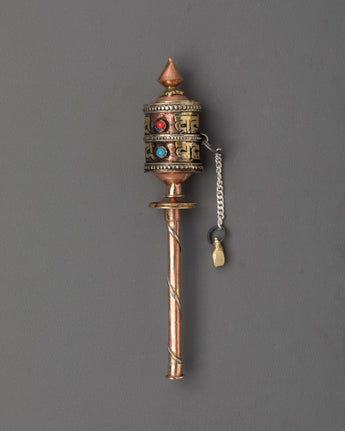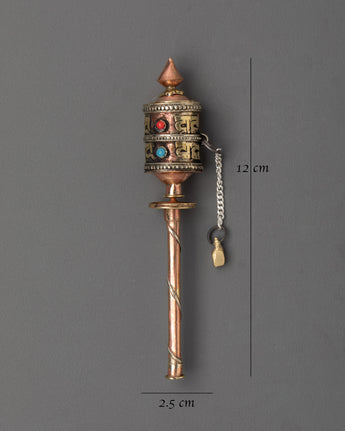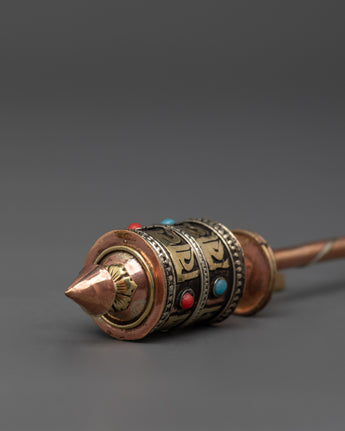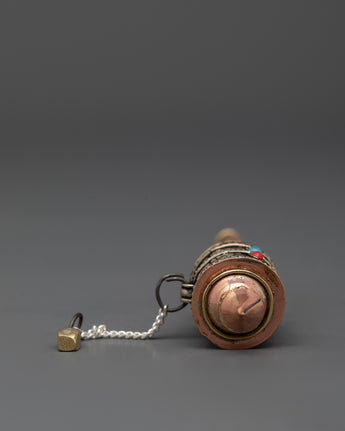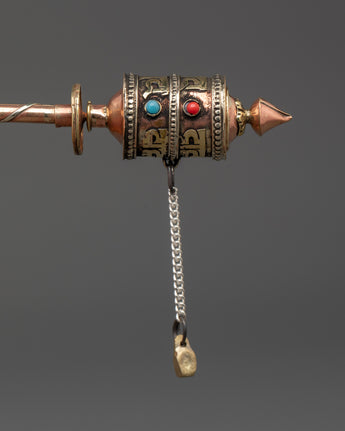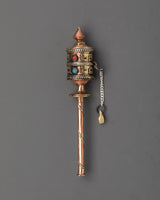
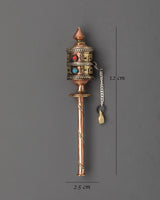

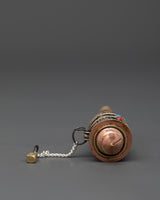
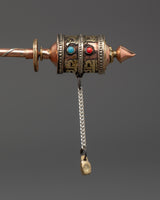
Traditional Tibetan Sacred Prayer Wheel | Handcrafted Copper and Brass Spinner

100% AUTHENTIC

HANDMADE

FREE SHIPPING
Traditional Tibetan Sacred Prayer Wheel | Buddhist Mantra Prayer Wheel
--------------------------------------------------------
Size: 12cm (Height) x 2.5cm (Width)
Weight: 0.016kg
Materials: Copper Body, Brass Body, Artificial Stone: Turquoise
--------------------------------------------------------
About our Prayer Wheel
Enhance your mindfulness and spiritual practices with this 12cm Tibetan Prayer Wheel, crafted ffrom copper and brass and delicately inlaid with turquoise and coral-toned stones. This sacred mantra spinner, designed for comfort in the hand and light enough for lengthy practice (weighing only 0.016kg), is ideal for mantra repetition, meditation, and blessings.
The prayer wheel is engraved with mantras, most often Om Mani Padme Hum, and rotates clockwise to symbolize the spread of compassion and spiritual merit. The turquoise inlay symbolizes healing and protection, while the coral tones provide vigor and grounding. With its intricate craftsmanship and classic appearance, this prayer wheel is an ideal addition to any altar, travel shrine, or personal practice collection.
Introduction to Prayer Wheel
A prayer wheel is cylindrical on a spindle and is used in Tibetan Buddhism. It is typically inscribed with the mantra "Om Mani Padme Hum" and rotated by hand as a form of spiritual practice and to accumulate merit. Spinning the wheel is believed to have the same spiritual benefits as verbally reciting the mantra. The use of prayer wheels is widespread in Tibetan Buddhism and has spread to other cultures.
How does the Buddhist Prayer Wheel benefit us?
The benefits associated with rotating the wheel are numerous. It promotes knowledge, compassion, and bodhicitta in the practitioner and improves siddhis (spiritual powers such as clairvoyance, precognition, etc.). The practitioner can repeat the mantra as often as possible while the wheel is rolling, maintaining a calm, meditative attitude. A Tibetan Buddhist tradition holds that after a practice session, one should dedicate any acquired merits to the benefit of all sentient beings. Then three times Om Ah Hum. This is usually among Tibetans after finishing any Buddhist practice, including the prayer wheel exercise.
How do you set up your own Buddhist Shrine?
• Find a clean, quiet, and uncluttered spot
• Set up an altar table and cover it with an altar cloth that calls to you
• Place your sacred item at the center


